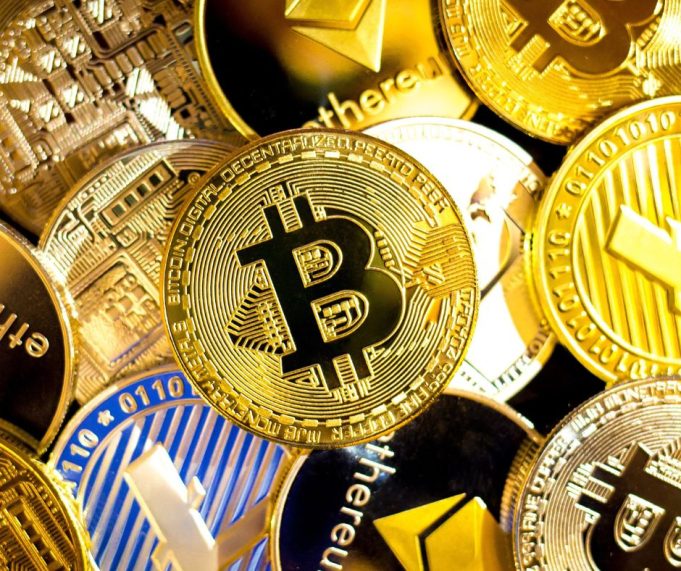Ordinals Protocol: Bridging the Gap Between Bitcoin Purists and NFT Enthusiasts
The Ordinals protocol is revolutionizing the way Non–Fungible Tokens (NFTs) are stored on the Bitcoin blockchain. This month‘s debut of the protocol has sparked a debate between Bitcoin purists, who believe the blockchain should be restricted to financial transactions, and those who see the network as large and versatile enough to host a range of use cases. Ordinals creator Casey Rodarmor has developed a protocol that uses “inscriptions” to add arbitrary content like text or images to sequentially numbered satoshis or “sats”, creating unique “digital artifacts” that can be held and transferred across the Bitcoin network. Ordinals Protocol is bridging the gap between Bitcoin purists and NFT enthusiasts, allowing users to store and transfer NFTs on the Bitcoin blockchain.
Unlocking the Potential of Ordinals with SegWit and Taproot
Ordinals are a revolutionary new way to store and transfer digital assets, and it wouldn‘t be possible without the 2017 Segregated Witness (SegWit) upgrade and the more recent 2021 Taproot upgrade to Bitcoin. SegWit introduced a block field to hold witness data, such as signatures and public keys, for Bitcoin transactions. However, potential vulnerabilities forced developers to impose limits on the size of that data. Taproot resolved these security concerns, allowing the old SegWit restrictions to be removed and paving the way for large chunks of NFT data to be stored on-chain. This makes SegWit and Taproot the perfect foundation for Ordinals, unlocking their potential and allowing them to be used in a variety of applications.
Bitcoin’s Non-Financial Uses: A Debate Rekindled
The debate over whether Bitcoin should be used for non–financial purposes has been reignited with the introduction of a new protocol. In 2010, Satoshi Nakamoto, the pseudonymous inventor of Bitcoin, answered with a resounding “no” to the idea of incorporating a domain name system (DNS) into Bitcoin. Now, with the emergence of the Non–Fungible Token (NFT) project, some members of the Bitcoin community are characterizing it as an “attack”, while others are embracing it. This article explores the implications of the NFT project and the ongoing debate over Bitcoin‘s non–financial uses. It examines the arguments of both sides, and the potential implications for the future of Bitcoin.
A New Way to Use Bitcoin for Non-Financial Transactions
Ordinals is a new protocol that allows users to use Bitcoin for non–financial transactions. It is designed to be a more efficient way to store data on the Bitcoin blockchain, and it has the potential to revolutionize the way we use Bitcoin. Despite some opposition, Rodarmor believes that Ordinals will fit into Bitcoin‘s existing security and incentive model. He also believes that Bitcoin has transcended its original purpose and is now open to a variety of uses. With Ordinals, Bitcoin users can now use the blockchain for more than just financial transactions.
Bitcoin Debate Reaches New Heights with Launch of Ordinals
The debate over the use of Bitcoin for non–financial applications has been reignited with the launch of Ordinals. Blockstream CEO Adam Back, a renowned Bitcoin cypherpunk, has suggested that miners should be able to censor non–financial applications as a form of discouragement. However, others, such as Bitcoin Core developer Luke Dash Jr., have taken a hard-no stance, calling Ordinals an “attack” on Bitcoin. With the launch of Ordinals, the debate over the use of Bitcoin for non–financial applications has reached new heights.
Ordinals – A Solution to Bitcoin’s Decreasing Block Subsidy
As the Bitcoin block subsidy continues to decrease, some thought leaders have proposed a solution in the form of Ordinals. Ordinals are a type of Non–Fungible Token (NFT) that can be inscribed onto the Bitcoin blockchain, allowing miners to compete for block space and earn higher transaction fees. This could potentially make it worthwhile for miners to continue securing the Bitcoin network, even with the decreasing subsidy. Dan Held, a Bitcoin educator, tweeted “Ordinals = NFTs on Bitcoin. This is good for Bitcoin.” With Ordinals, Bitcoin may be able to maintain its security and decentralization, even as the block subsidy continues to decrease.
Taproot and Ordinals: Is the Freakout Justified?
The recent hullabaloo surrounding the Bitcoin Taproot upgrade and its connection to Ordinals has left many in the crypto community scratching their heads. But according to Bitcoin Core developer Peter Todd, the uproar may be much ado about nothing. Todd tweeted, “This freakout re: ordinals is stupid. You‘ve always been able to embed as much data as you can pay for in BTC transactions. Taproot didn‘t change that.” Dennis Pourteaux, a surgeon and longtime Bitcoiner, further clarified the connection between Taproot and Ordinals in a blog post. He explained that Taproot made it possible to have unlimited transaction size, as long as it is smaller than a block itself. So is the freakout justified? Join us as we explore the implications of Taproot and Ordinals.
The Debate Over NFTs on Bitcoin: Exploring the Benefits of Ordinals
The debate over the use of Non–Fungible Tokens (NFTs) on Bitcoin is heating up, but one thing is for sure: the Bitcoin community is benefiting from it. According to Bitcoin enthusiast and NFT aficionado, Pourteaux, the squabbling over Ordinals is a blessing in disguise for the Bitcoin community. He believes that by having these technical debates and by putting the smartest minds together, the Bitcoin community can keep Bitcoin safe. Similarly, Rodarmor sees NFTs on Bitcoin as a decentralized, permissionless fun project that encourages people to learn more about Bitcoin and run their own full nodes. Ultimately, the debate over NFTs on Bitcoin is a great opportunity to explore the benefits of Ordinals and how they can be used to strengthen the Bitcoin network.













